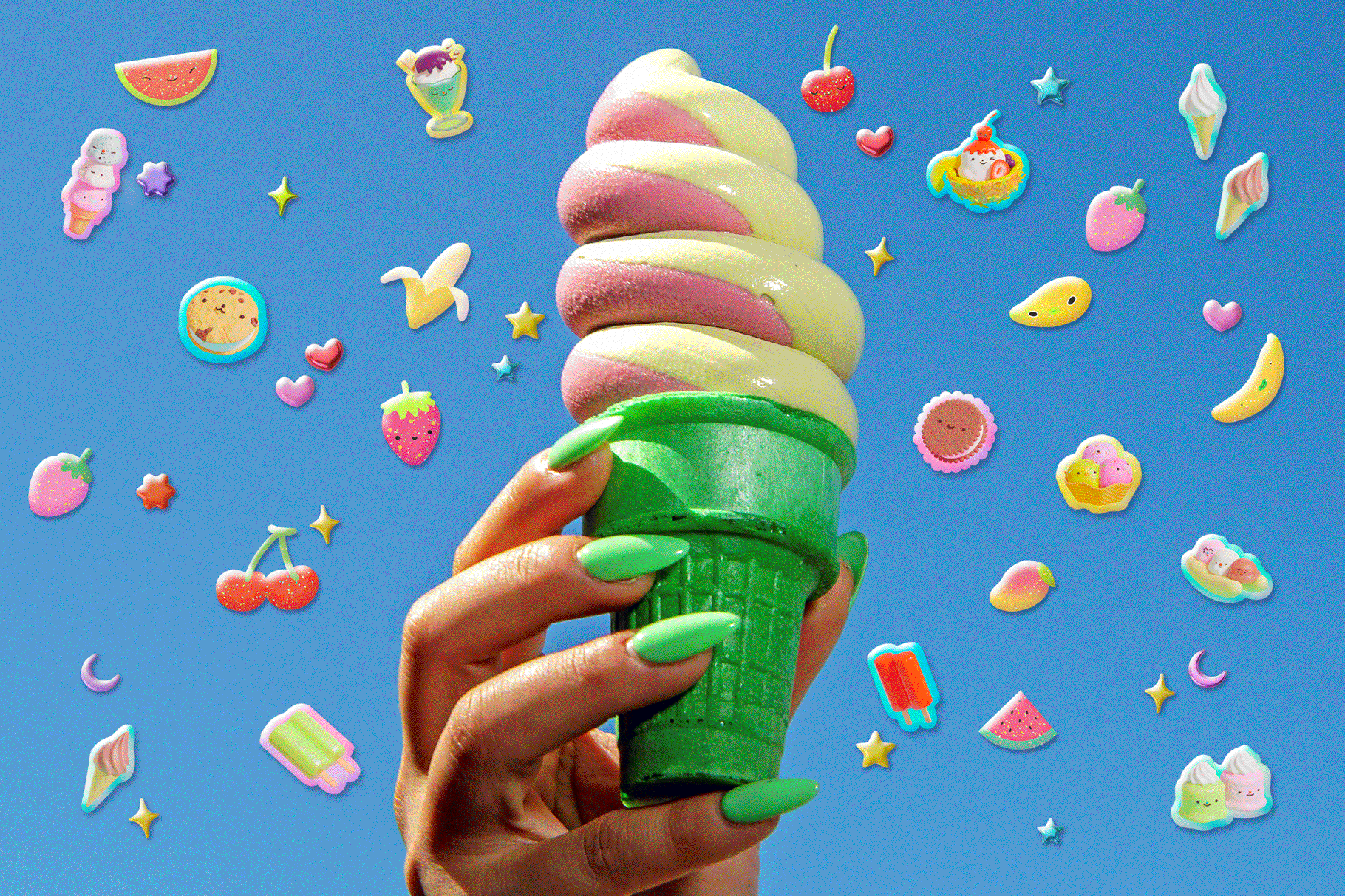Italy Rated Number 1 on the Ice Cream List
- Share via
RAVENNA, Italy — I wrapped my tongue around a silken scoop of cioccolata on a warm day and decided that Italian ice cream--the wondrous gelato --is the best in the world.
And, arguably, the best in northern Italy is from the lavish trays at Gelateria San Vitale on the Via Cavour near the Basilica of San Vitale in Ravenna.
The basilica is famed for its dazzling 6th-Century mosaics, which glisten from walls and ceilings in vibrant blues and golds, rich browns and white. These religious scenes, formed from bits of glass and rock, seem as fresh as when they were made.
Just like the ice cream nearby.
The Gelateria San Vitale has artful presentations, too. The signorina in charge of this ice cream parlor presides over her emporium with the flair and pride that priests and guides exhibit at the more sacred palaces of mosaic.
Golden Wedges of Fruit
She stands beaming over a tray of pineapple gelato with a golden wedge of ripe fruit set atop its lustrous surface. She sweeps her arm pridefully toward trays where wild berries or slivers of hazelnuts are strewn as clues to other flavors. The house specialty is Cremino San Vitale, a two-tone beauty that blends the colors of coffee and pale cream.
Flavors are posted in blue ceramic script on white ceramic squares, a nice nod toward the tradition of Ravenna. They change with the seasons.
Italians never seem to order just one flavor for their cones or cups. Using small shallow spoons that resemble miniature trowels, clerks press scoops on top of each other and then on sides, as if they were working with fast-drying plaster. Ah, but each taste stands alone.
I first tried the signorina’s winsome Tira Misu, which is laced with espresso, cream and chocolate. Its name translates as “pick me up.”
It had picked me up across northern Italy since I discovered it in the towered Tuscan town of San Gimignano, at the Pasticceria Marcella e Armando, not far downhill from the central Piazza della Cisterna.
The young proprietors had posted their membership in the Italian gelato society, which, as strictly as a French vintage jury, assures that ice cream is of superior quality and is made on the premises; no refrigerated trucks pull up outside.
Several Flavors Tasted
The signorina’s Tira Misu met the test. So did half a dozen other flavors that I sampled in the name of research.
Later in the medieval heart of Siena I became a regular at a gelateria called Nannini at 99 Banchi de Sopra, not far from the wide-open fan of the famed Piazza del Campo.
The smartly uniformed young women of Nannini arrange their flavors by butterfat content--ranging from sherbets through semi-freddi , a whipped custard and ice cream combo, to the richest ice creams--and by color, which somehow seems immaculately Italian.
Pastel flavors like banana and kiwi are at the left, and the spectrum swings over to the deepest chocolates at the right. Here was where I first tasted the Italian tartufo, which proved as decadent as a rich chocolate truffle.
As I licked away at my tartufo, leaning against a medieval Sienese wall, I looked across at the headquarters of Monte dei Paschi di Siena, which dates back to two years before Columbus discovered America. It’s said to be the oldest operating bank in the world.
In the stone piazza is a life-size statue of Salustio Bandini, who was an economist and priest, and thus someone to be adored by the Sienese on two counts.
He is wearing a full-length cassock with buttons from chin to ankle, and he is scowling. The fifth button from the top of his cassock is unbuttoned, as are three at the waist.
Poor man, I mused. Could it have been the ice cream?
I snapped my jacket quickly, just to prove I still could.
More to Read
Eat your way across L.A.
Get our weekly Tasting Notes newsletter for reviews, news and more.
You may occasionally receive promotional content from the Los Angeles Times.










